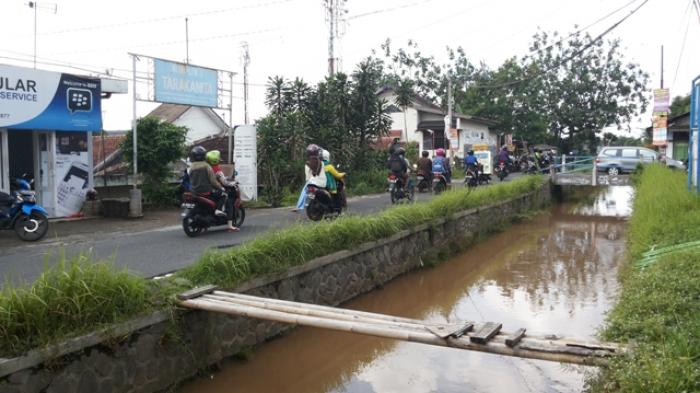
Our daily routine was lovely, and changed little over the year: the classes we taught started in mid- and late-afternoon, and therefore sometime after a casual morning of reading, preparing lessons, or running errands and exploring, it was time to make the commute to school.
That meant saddling up our bikes and riding the sandy, back roads from Pogung Baru on the outer limits of "urban" Yogyakarta down through the villages and rice paddies of Central Java to school. It was one hell of a ride, and before long we knew the longest route possible that permitted us to avoid the hectic and slightly dangerous traffic of Jalan Kaliurang. When we rejoined the highway and turned our bikes eastward towards central Yoyyakarta, it was when we'd reached the Selokang.
No other feature on our route was as much a topic of conversation.
Continue reading "The Selokang of Yogyakarta"
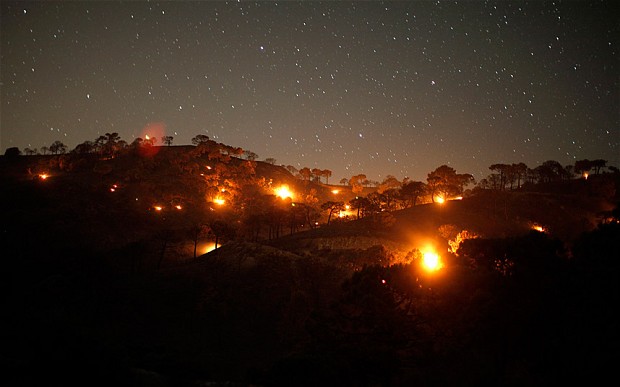
Rodeo Grande
It made perfect sense on paper, when you looked at a map: why return to Condega from Rodeo Grande through Somotillo, Chinandega, Leon, San Isidro, and Esteli, when there was so clearly a road that led from just north of Rodeo Grande to San Juan de Limay and then to Esteli? Another option, a road to Somoto (also close by) remained still unrealized. "We'll decide later," we thought, about what we'd do. The long way back home is certainly better known, more secure, perhaps easier. But to complete the circle?
The bus passes at 5:10 AM, we were told, and the point where I'd catch it lie a decent two hours' walk north of here, or perhaps more. M had walked it once before, or rather, had traversed it on horseback when it was nothing more than a trocha (footpath). Just a few weeks ago however they'd formed it into a real road with bulldozers and heavy equipment. Should be easy to follow, perhaps even an adventure. A slow tranquil day passed as we made our decision. M cut up pineapple and mangoes and I made pancakes we ate with syrup and strawberry jam. Green tea with sugar sip by sip. Lounging in the hammock in the doorway chatting about Life, the Universe, and Everything. Lounging in the tijera in her bedroom looking at pictures. The heat, the darkness of that back room, children's voices everywhere, her hound dog Maggie reclined at my feet. 'I can't believe how much she loves you,' says M.
Mid afternoon, and putting the pictures away, nap for a half hour or so. Then, waking up, the decision must be made: Do we leave then, spend the night in San Francisco del Norte (San Pancho) and catch the bus directly? Or, do we putz around the house all evening, then leave at 3AM to catch the bus, walking all night and hopefully under moonlight? Well, it was obvious: we leave tonight.
Continue reading "Fires"
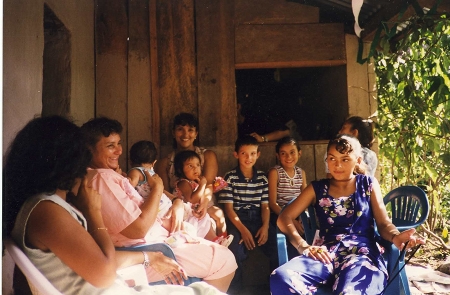
May 2002: Leaving Nicaragua after so many years it has long since felt like home to me. After such a long and lovely stay, and wondering when it is I'll return to this place I love so much, I'm intensely aware of how much I'll miss.
Here's just a taste of it:
Continue reading "Leaving (and Missing) Nicaragua"
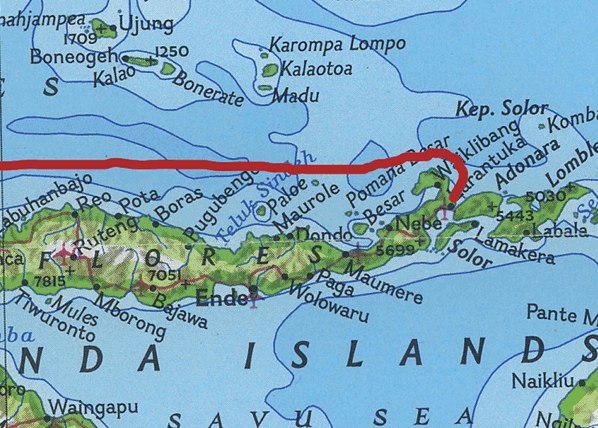
August, 1993:For weeks I'd traveled eastward across Java, Bali, and the Lesser Sunda Islands. But it was time to head back to Java to begin work and an adventure of a different sort. Evaluating my choices from rural, remote Larantuka, Flores, my options were stark: the next Pelni ship wouldn't reach Surabaya until far too late, and getting there sooner meant retracing my steps across dozens of long bus rides. Wandering around the port town I made a friend in a young Flores teenager interested in practicing his English with me, and as I described to him in Bahasa my predicament, he proposed what was soon to become one of my best adventures ever, unsurpassed on three continents. "Because we are friends," he explained, "and I want you to be alright."
Down in Larantuka's busy port, a tramp steamer bound westward through the Flores Sea for Surabaya was planning to slip its mooring later that night. Gusty, his older brother, and I located the captain and struck a deal. The K.M. Nagimulia – about a hundred and twenty feet along the water line and looking well-loved but well-worn – was off with a load of copra, plus a few bits of miscellany like a beat-up old car. Another bit of miscellany was me: a young adventurer bearing nothing but a sun-bleached backpack, a journal and pen, and a paperback or two. Money exchanged hands, muffled conversations settled the terms and conditions, one of which was clearly the fact that my presence on board would go unreported, and I'd stay out of sight when necessary. Later, when a customs inspector saw me, I noticed more money exchanging hands. We departed on the eighth of August, not long after sunset, to cries of "bebas mereka!" ("we're free of them!") and before long the harbor had slipped below the horizon and we were headed westward in unruffled seas.
Continue reading "By Tramp Freighter Across the Lower Sundas"
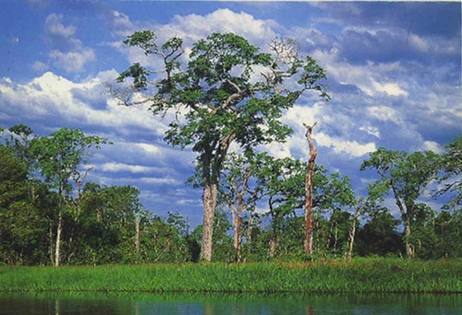
From Bolivia’s Altiplano down to Santa Cruz, aircraft require hardly any fuel whatsoever, as the course is a nearly free-fall trajectory down 2000 meters to Bolivia’s lush, green plains. They were gorgeous, but man is it another world. We arrived nearly a midnight to a town swamped with development conventions only to find the hotel had lost our reservations. Our guide had to scramble to find us a room elsewhere, and I personally wound up in a palatial, presidential suite in a place across town. The room reminded me of my house in Managua.
I attended a few round tables that didn’t excite me, and where the Bolivians didn’t seem to understand the nature of what we were doing. “Bolivians are tired of being asked about their development needs,” explained our counterpart back in La Paz a bit later: we’ve been doing it for so long, with so many partners, so many different ways. What never changes is after the round table is over, there is no action. I was overwhelmed with the sense of La Paz being perceived as practically an foreign, oppressor government. And my Bolivian friends wasted no time in talking to me about La Paz in a way that made clear the contradictions ran deep and were deeply personal.
Continue reading "Santa Cruz and the Bolivian Lowlands"
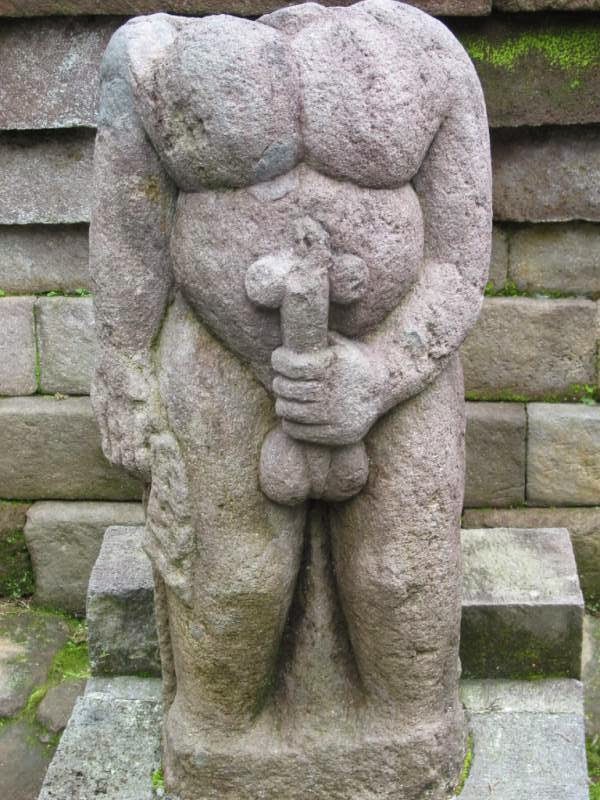
Sheathed in forest on the middle slopes of Java’s Mount Lawu was a 15th century Hindu temple by the name of Candi Sukuh. Carrying only the backpack that had taken me across the Pacific and down half the length of Indonesia’s most densely populated island, I eschewed a 1000 Rupiah motocycle ride and began the long hike to the top. Bad Idea: it was exhausting, and even my “perfect travel bag” remained too over-packed: I was still learning how best to travel. But, it was also a Good Idea: I evaded the rest of the travelers and spent the walk amongst friendly Javanese. This is why we leave home, after all. I helped one old woman carry her things from the pasar (market), and some young women sitting coyly at roadside on a low wall of volcanic rock taught me the Javanese “sukueng siang” greeting, a near equivalent to the Bahasa I’d studied. I'd only been in Java a few days, but upon departing Yogyakarta in the direction of Surakarta, the adventures were already piling up.
Continue reading "The Hike from Candi Sukuh"
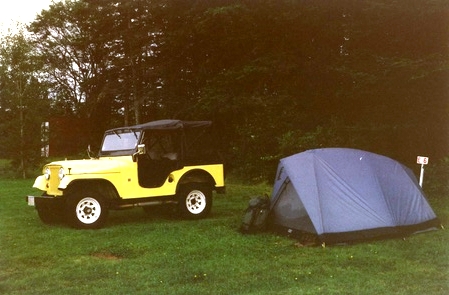
Maine gradually turned quieter and quieter as I passed Portland and the roadway passed almost exclusively through trees. Northern Maine has some of the most gorgeous scenery of the Northeast, and yet so few live there to appreciate it. More than once I worried about running out of gas on the more distant stretches. By that measure, the border town of Callais (pronounced "callous", ha ha ha) was a metropolis of international shopping and dining under both New Brunswick and American flags.
The weather was cooling already in early fall, though it was hard to tell by glancing up at the omnipresent conifers. The water had turned a deeper shade of blue with the arrival of September's chill, and I didn't relish jumping in it. The road was long and life was good.
Continue reading "The Bay of Fundy"
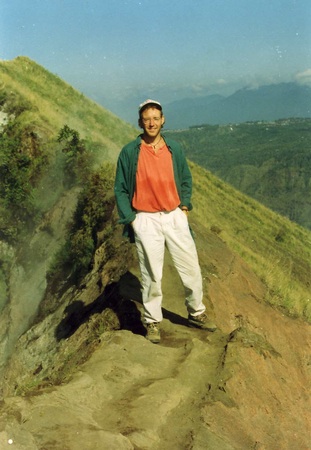
Making my way around the south of Bali I came to to fishing port of Padangbai, looking for someplace cheap to stay. A block away from the water, I found a little place striving for excellence. They showed me some fancier rooms going for 10,000 rupiah each – more than I’d spent to travel there, and more than I wanted to pay. But when I asked for something simpler they took me up to the second story to something more charismatic and far cheaper, and that’s where I stayed. It was a simple room with wide planked wooden floors well-trodden, windows overlooking the harbor, a single bulb, and just the hint of a smell of creosote from the shipyard next door.
After a simple dinner I crawled out onto the balcony with some candles, my notebook, a fountain pen. There was an oil lantern hanging from the roof and I lit it and watched as the moon rose over the Lombok strait. It was possible to travel more comfortably than this, I thought to myself, but impossible to travel more happily. With the exception of a sailor’s marlinspike knife in my pocket, everything I wanted in the world was in my bag, and nowhere on earth would have suited me more than where I was.
Continue reading "Stars over the bay, sunrise over the crater"
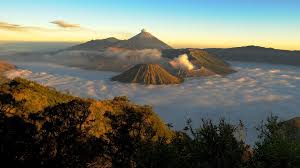
Late October, 1993, and a perfect day for traveling. Jamie and I struck forth on a train to Eastern Java. Malang had a a particular appeal to me, being the home town of the woman who had taught me Indonesian the summer of 1991, and I was happy to go visit her.
Afterwards, we took a bus north to Pasururan and then another to Parasen. Not easily, either! We were annoyed more than once by mysterious money deals happening in our presence, bad information, price changes, and the usual lot of the foreign traveler in places where prices are suggestions and formed on the basis of need and expectation. But the last leg of the trip was spectacular: by motorcycle up the hills through a Tolkienesque forest to the mountain town of Wonokitri. Hill after hill was surprisingly farmed right up to the peak, and deep cut valleys of stone esplanades unfurled before us. The tree tops formed a leafy canopy over our heads as the afternoon sun set over our left shoulders. The air chilled in that delightful way only altitude in the tropics can arrange, and as the road thinned and finally sputtered out the foliage melted into pines.
Continue reading "Wonokitri, the Tenggu people, and Mt. Bromo"
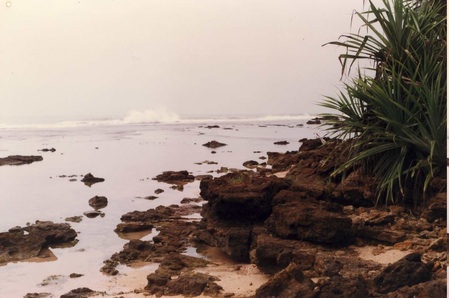
It’s not much more than a thick hook of land tucked under Java’s jaw, located a couple of hundred kilometers south of Jakarta. But it’s within striking distance of the infamous Krakatoa island volcano, and it was a compelling destination and a journey representative of most of the trips I made in Indonesia.
First, you had to get a pass to enter the Ujung Kulon park, since it’s technically a national reserve. Then you had to hire a guide at whatever price you negotiated. Then the guide takes you to the corner store so you can stock up on food for both you and reminds you that you are required to buy him a couple packs of kretek clove cigarettes, too. Wait, what’s the deal, here? Then you set off to hike.
Continue reading "Ujung Kulon"
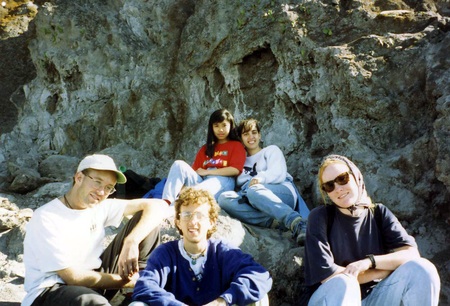
We were four friends: teachers gathered from all over the United States in order to teach at the Universitas Atma Jaya in Yogyakarta, Indonesia. And despite differing backgrounds and differing personalities, we all got along with each other so well we were able to share a few adventures together. Scaling Mount Merapi was one of them.
At 2950m, Mount Merapi (“the mountain that blows fire”) is one hell of a volcanic peak, and though it was calm other than the occasional rumble the entire time I lived in Indonesia, it erupted five months after I left Indonesia. It has gone on to blow its top several times since then, destroyed dozens of villages and hundreds of lives, and generally lived up to its name: eruptions in 2006 and 2010 killed hundreds and displaced hundreds of thousands. It's essentially in a state of continuous eruption or activity. During the two years I’d learned about Indonesia and studied Bahasa, I’d come to understand Indonesians almost without exception are born, live, and die within sight of a volcano. Merapi, which dominates the northern skyline of Yogyakarta, would be mine in 1993 and 1994.
Continue reading "Kaliurang and Merapi"
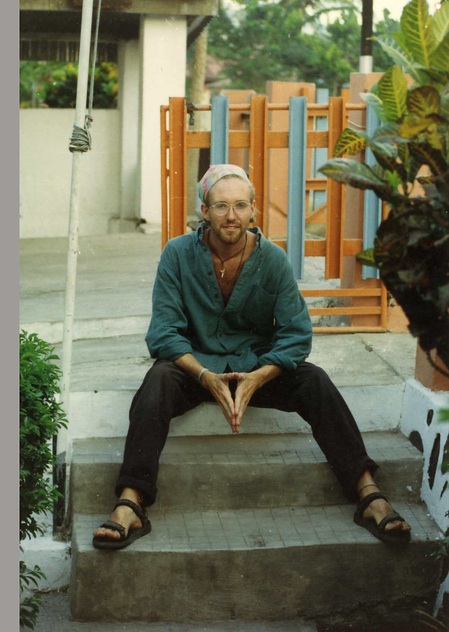
Five hundred years ago the people of Bima, Sumbawa grew crops in volcanic soil, built small fishing boats out of hard wood, and traversed the Indonesian archipelago under lateen sail in search of fish. In 1993 when I visited them, they still did. Sumbawa is fascinating, lying at a "transitional point between the Indianized 'high' cultures of Western Indonesia and the traditional pagan cultures of eastern Indonesia."
I had traveled eastward down the Nusa Tenggara from Jakarta, crossing Java, Bali, and Lombok, and in Bima I was interested in boat schedules for a Pelni ship that would take me back west to where a job and my next adventure awaited me. But Sumbawa was too good to resist - even the name was delicious on the tongue. Sumbawa is rough, rumpled, mountainous, and in 1993 at least it was delightfully untouristed. From bus windows I saw not entreaties for foreign visitors but simply farmers and fishermen doing what they’d always done. The hillsides looked wild, untamed, even unused. The hillsides drew my eyes most easily: steep and parched, draped over the higher summits by dark clouds that seemed unwilling to shed their watery loads. It was no wonder people turned to the sea. Drawing on my own experience in small boats on the Eastern seaboard, Sumbawa’s rumpled coastline looked like a paradise for a small, maritime gunkholer like myself. But Sumbawa was full of fragant sapan and sandalwood timber too, as well as tobacco and lots of grains.
Continue reading "Market Night in Bima, Sumbawa"
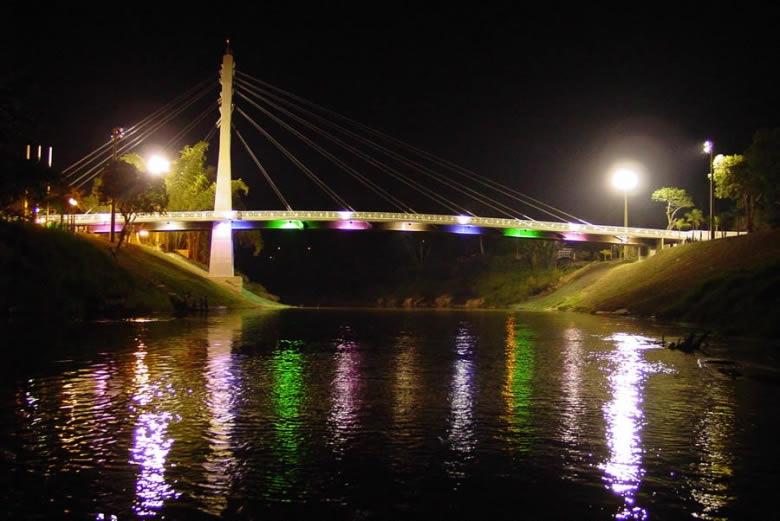
From El Alto, Bolivia down to Cobija we drifted downward from the Altiplano like a butterfly, and landed in a new world. 100% humidity, 30 degree celsius temperature: it was like I was back in Nicaragua, but greener and wetter. The earth smelled of wet clay, of vegetation, of burning: the smell of the tropics.
“El Chaqueo” explains Rodrigo, who picks me up at the airport. I struggle to get my luggage, which is picked up and lifted into a heavy cargo truck, and then unloaded by hand into a cement corner of the airport, where the crowd jostles forward to see and identify their belongings. I’m there, too. More than half of them are Brazilian: the border is just minutes north of here. Looking around while I wait for my one small bag to appear, I notice the airport is a one room affair, cold concrete painted celeste azul (what is with tropical countries and that color?) and a series of round, thatched roofs that march upward in concentric circles, lashed with bamboo.
Continue reading "Gas in Bolivia, Steaks in Brazil"
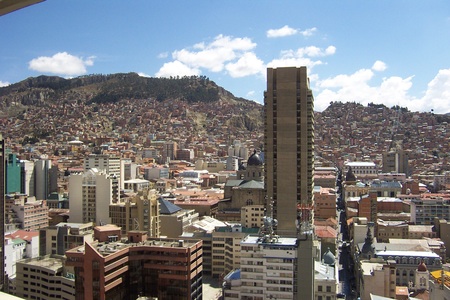
I managed the pre-dawn arrival to La Paz despite being wedged in the middle class of an economy class seat between two weirdos. The first woman was terrified of flying and threw a blanket over her head and trembled the whole way. The other woman was clearly on drugs. Commercial flights are the worst.
La Paz was exhausting and stunning. So high up! And I wound up in a 5th floor hotel room that took me even higher. I’d been warned about altitude sickness and had come armed with some gingko biloba drops, but never really needed them. In fact, the only time I ever really noticed anything was when I stood up quickly to rush for the elevator and arrived feeling winded. The air is thin up there, after all.
Continue reading "La Paz, Bolivia"
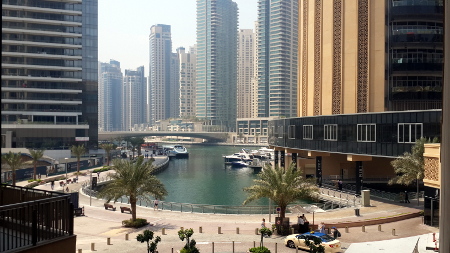
It was late 1992 and all my thoughts were on graduation and the wide world that awaited me; even Ithaca was starting to seem small and I was itching to finish my formal education and get out into the world for some “informal education.” Evenings I took my passport from the drawer and examined it, took my backpack out from the closet and walked around wearing it, testing, probing. In my journal I listed places I’d like to see, adventures I wanted to experience, and laid out my hope that I’d travel far and wide, and my fear that I wouldn’t.
I read those old journal entries again for the first time in ages. And to my immense satisfaction, I read them while visiting Dubai. Imagine, the Gulf States, drenched in Arabic lettering and the architecture of the Middle East. Better still, I’d gotten there from Uganda, our new home. Better still, I’d soon be returning to a wife I met in Central America and kids raised in Francophone Africa. How immense is the world, and how endlessly fascinating and satisfying.
The same could be said of Dubai.
Continue reading "Dubai"














